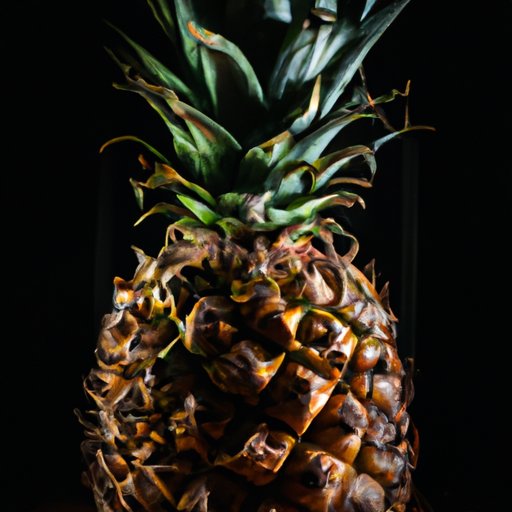Introduction
Pineapples are a delicious and nutritious tropical fruit that can be enjoyed in many ways: sliced, diced, grilled, or blended into a tasty smoothie. However, picking the perfect pineapple can be a bit of a challenge, especially if you don’t know what to look for. Fortunately, there are several methods for selecting a ripe pineapple that will ensure that you end up with a juicy and flavorful fruit. In this article, we’ll explore some of the most effective tips for choosing the best pineapple.
The Shape Method
The shape of a pineapple can give you a good indication of its ripeness. A ripe pineapple will have a plump, round shape, while an unripe fruit will be more angular and elongated. To use the shape method, look for a pineapple that has a symmetrical shape and feels firm to the touch. Avoid pineapples that are too soft or have visible bruises or spots.
The Scent Method
The scent of a pineapple is another clue to its ripeness. A ripe pineapple will have a sweet, fragrant aroma that is easy to detect from a distance. To use the scent method, hold the pineapple up to your nose and take a sniff. If you can’t smell anything, the pineapple is likely unripe. If it smells sour or fermented, it may be overripe. Look for a pineapple with a fresh, fruity scent that indicates that it is just ripe.
The Leaf Method
The leaves of a pineapple can also give you some insight into its ripeness. A ripe pineapple will have green leaves that are easy to pull out. To use the leaf method, gently tug on the leaves near the top of the pineapple. If they come out easily, the pineapple is likely ripe. If the leaves are firmly attached, the pineapple is not yet ready to eat.
The Color Method
The color of a pineapple can also be a good indicator of its ripeness. A ripe pineapple will have a golden yellow color on the outside, with some brown or black spots. However, the color of the leaves can also give you some clues. Look for a pineapple with bright green leaves and a golden yellow skin.
The Sound Method
The sound of a pineapple can also be used to determine its ripeness. A ripe pineapple will make a hollow sound when tapped lightly with your finger. If the sound is dull or thud-like, the pineapple may be unripe or overripe. To use the sound method, gently tap the pineapple with your finger and listen for a hollow sound.
The Weight Method
The weight of a pineapple can also be used to determine its juiciness. A ripe pineapple will be heavy for its size, indicating that it is full of sweet, juicy fruit. To use the weight method, pick up the pineapple and compare it to others of a similar size. Choose the heaviest one, as it will likely be the juiciest.
Conclusion
Using these different methods for selecting a ripe pineapple will help you to pick the perfect one every time. Remember to look for a pineapple with a symmetrical shape, a sweet fragrance, green leaves, a golden yellow color, a hollow sound, and a heavy weight. When you get home, store your pineapple at room temperature until it is ready to eat. For maximum flavor and juiciness, slice off the top and bottom, stand the pineapple upright, and slice off the skin in a zig-zag pattern.
